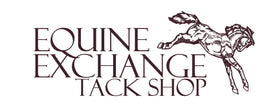
EHV-1 What Every Horse Owner Needs To Know
Equine Herpesvirus-1 (EHV-1) is a highly contagious virus that poses a significant threat to the equine community. This disease has gained increasing attention in recent years due to its potential to cause severe outbreaks, leading to economic and emotional distress for horse owners, trainers, and competitors alike. Understanding EHV-1, its symptoms, transmission, prevention, and treatment is critical in mitigating its impact.
What is EHV-1?
EHV-1 is a strain of equine herpesvirus that can cause respiratory disease, abortion in pregnant mares, neonatal death, and neurological issues in horses. While most horses are exposed to some form of equine herpesvirus early in life, EHV-1 is particularly concerning due to its potential to cause Equine Herpesvirus Myeloencephalopathy (EHM), a severe and often fatal neurologic condition.
Symptoms of EHV-1
In many horses, the first or only sign of EHV-1 infection is fever, which can go undetected. In addition to fever, other common signs of EHV-1 infection in young horses include cough, decreased appetite, depression, and a nasal discharge. Pregnant mares typically show no signs of infection before they abort, and abortions usually occur late in gestation (around eight months) but can be earlier. Abortions can occur anywhere from two weeks to several months following infection with EHV-1.
Other signs that a horse is infected with EHV-1 may include:
-
Hind limb weakness or incoordination (in EHM cases)
-
Urinary incontinence or difficulty urinating
-
In pregnant mares, sudden abortion without prior signs of illness
How is EHV-1 Transmitted?
EHV-1 spreads primarily through direct horse-to-horse contact, but it can also be transmitted via contaminated equipment, clothing, and even human hands. The virus is shed through nasal secretions, saliva, and bodily fluids. Airborne transmission is also possible, particularly in enclosed environments such as barns and trailers.
Prevention and Biosecurity Measures
Preventing the spread of EHV-1 requires strict biosecurity protocols, especially in high-risk environments such as boarding facilities, racetracks, and competition venues. Here are some key prevention strategies:
-
Vaccination: While vaccines are available for respiratory and abortion forms of EHV-1, they do not fully prevent the neurologic form (EHM). However, vaccination can help reduce the severity of outbreaks.
-
Isolation and Quarantine: New arrivals or horses returning from events should be isolated for at least 21 days before joining the main population.
-
Hygiene Practices: Regular disinfection of stalls, shared equipment, and thorough handwashing can reduce viral spread.
-
Monitoring and Early Detection: Taking temperatures twice daily and monitoring for signs of illness can help identify infections early.
-
Restricted Movement: Avoid unnecessary travel and contact with unfamiliar horses, especially during outbreaks.
Diagnosis and Treatment
EHV-1 is diagnosed through laboratory testing, including nasal swabs and blood tests. There is no cure for the virus, but supportive care can help affected horses recover. Treatment may include:
-
Anti-inflammatory medications to reduce fever and discomfort
-
IV fluids for hydration support
-
Nutritional support for weakened horses
-
Strict isolation to prevent further spread
Horses suffering from the neurologic form (EHM) may require intensive care, including slings for support and catheterization for urinary issues. Unfortunately, severe cases may not recover, and euthanasia is sometimes necessary.
Recent Outbreaks and Industry Impact
In recent years, EHV-1 outbreaks have led to the cancellation of major equestrian events worldwide. The economic impact on the horse industry is substantial, affecting everything from show schedules to breeding programs. In 2021, an EHV-1 outbreak in Europe caused widespread concern, leading to event cancellations and extensive quarantine measures.
Conclusion
EHV-1 remains a significant concern for horse owners and industry professionals. By staying informed, implementing rigorous biosecurity measures, and recognizing early symptoms, we can work together to mitigate the risks associated with this devastating virus. Vigilance and proactive management are key in protecting our equine partners and ensuring the continued health and safety of the horse community.






